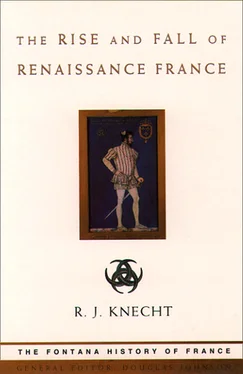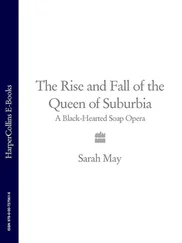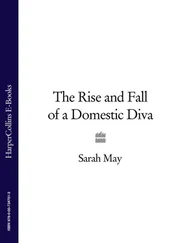Anne, the duke’s elder daughter, was only eleven and a half at this time and the question of her guardianship immediately caused friction between the Bretons and the French. Francis II in his will had entrusted his daughters to the custody of Marshal de Rieux and the sire de Lescun; but on 18 September, Charles VIII claimed it for himself by virtue of his kinship with the girls. Matters were complicated further when Anne fell out with Rieux, who was planning to marry her off to Alain d’Albret. While Anne shut herself up in Rennes with Dunois and a force of German mercenaries, Rieux occupied Nantes, seizing the ducal treasury.
The French threat to the independence of Brittany was a matter of serious concern to other European powers, especially Spain, Maximilian of Habsburg and England. They used the respite provided by the Treaty of Le Verger to draw closer together. The Iberian peninsula had recently become more unified as a result of the marriage of Ferdinand of Aragon with Isabella of Castile. As each was a monarch in his or her own right, they were known as ‘the Catholic Kings’. But the unification of Spain still had a long way to go. It needed to annex the Moorish kingdom of Granada in the south, and the counties of Cerdagne and Roussillon, not to mention the small kingdom of Navarre in the north. Ferdinand had claimed Roussillon since the accession of Charles VIII, but France did nothing to oblige him as long as she knew that the bulk of his army was engaged in the conquest of Granada. Yet if Ferdinand could not act himself, he could obstruct French designs by using other European powers, such as England. Though Henry VII was indebted to the French government for assistance in gaining his throne, he was unable to resist Ferdinand’s tempting offer of a matrimonial alliance. This was concluded in 1489, when Ferdinand’s daughter Catherine married Arthur Prince of Wales.
Maximilian of Habsburg viewed himself as the heir to Charles the Bold, duke of Burgundy (d. 1477), who had built up a powerful state stretching from the North Sea to Switzerland and sandwiched between France in the west and the Holy Roman Empire in the east. He had been succeeded by his daughter Mary, but some of her territories, notably Burgundy, had been forcibly annexed by Louis XI of France. He had wanted to win her by any means for his son, the future Charles VIII, but she would marry only Maximilian who thus acquired his claim to the old Burgundian territories. His efforts to regain those that had been taken by France, however, were hampered by his chronic insolvency and by the need to defend his patrimonial domain in central Europe (Austria and Bohemia) against the Hungarians and Turks. France, for her part, sought to embarrass Maximilian by meddling in the Low Countries. When he attacked France in 1484, the Beaujeus sent troops into Flanders. Some had to be recalled at the start of the Mad War, but in 1487 the French captured Saint-Omer and Thérouanne. In an engagement at Béthune on 27 July they captured the count of Nassau and the duke of Guelders, narrowly missing Maximilian himself. In the following year, Flanders rose in revolt. The inhabitants of Ghent declared themselves subjects of the king of France, while the people of Bruges seized Maximilian; they kept him prisoner for a few months and put to death his Flemish councillors. In May 1488 he regained his freedom as a result of French arbitration, and in 1489 he signed the Peace of Frankfurt.
England kept a close watch on continental events from her vantage point in Calais. In 1485 the Beaujeus had helped to place Henry Tudor on the English throne: they had supplied him with ships, troops and money. He was not ungrateful, but his subjects regarded the independence of Brittany as essential to their security. As the archbishop of Sens reported in 1489: ‘The English, in their king’s presence, told them [the French ambassadors] that Brittany was “little England”. They will send there up to the last man in England in spite of the king.’
On 11 December 1488, France declared war on Brittany. Within a few weeks her troops overran the duchy, occupying Brest, Concarneau and Vannes, but swift as it was, the French campaign was not quite swift enough. Troops sent by Brittany’s allies – Henry VII, Ferdinand of Aragon and Maximilian – soon arrived in the duchy. Encouraged by this help, Breton resistance stiffened; and by May all of Lower Brittany save Brest had reverted to the duchess Anne. Yet the Bretons were by no means united: several nobles went over to the French side during the year, while Rieux tried to win power for himself by isolating Anne from her allies. On 22 July 1489, Maximilian signed a peace treaty with France in which the question of Brittany was referred to a court of arbitration in Avignon chaired by the papal legate, Giuliano della Rovere, who at this time was a notorious Francophile. In October 1490 a truce ended the fighting in Brittany until 1 May 1491.
Rieux now abandoned Albret as a prospective husband for Anne and rallied to the idea of marrying her off to Maximilian, King of the Romans. This project became something of a reality in March 1490 when Maximilian appointed four proxies to marry the duchess. The ceremony, which had the approval of the Breton estates, took place in Rennes cathedral on 19 December. Such a marriage was in breach of the Treaty of Le Verger, which had forbidden the duchess to marry without the consent of the king of France, and gave serious offence to Alain d’Albret who had hoped to marry her himself. As captain of Nantes, he was well placed to influence events in the duchy. He began secret talks with Charles VIII and, on 2 January, offered him the keys of Nantes in return for major concessions which the king was unlikely ever to implement. French troops entered Nantes on 19 March and, after elaborate preparations, Charles made his own entry on Palm Sunday (4 April). As soon as the truce expired the French resumed their military operations in the duchy, capturing Vannes on 19 May and Concarneau on 6 June. La Trémoïlle, who had once again become lieutenant-general, took Redon and Guingamp. Only Rennes and the duchess remained independent.
Charles VIII now staged a coup d’état. Realizing that Louis d’Orléans might help a settlement of the Breton question, he ordered his release from prison in Bourges and pardoned his treason. The duke, for his part, was glad to make his peace with Charles. Much as they disliked this turn of events, the Beaujeus resigned themselves to it. On 4 September, Pierre de Beaujeu (now duc de Bourbon) and Orléans were formally reconciled and, according to Commynes, became inseparable. Meanwhile, the war in Brittany drew to a close. In mid-June 1491, 15,000 French troops encircled Rennes, and Anne, finding herself without money or effective allies, had to seek a settlement. On 27 October she was advised by the Breton estates to marry the king of France, but Anne was only prepared to exchange Rennes for her own personal freedom. Charles, meanwhile, waited patiently. On 15 October, Rennes capitulated. Under a treaty the town was declared to be neutral and handed over to the dukes of Orléans and Bourbon and the prince of Orange, Anne’s freedom being respected.
The king did not ask for Anne’s hand. Instead, he offered her an escort should she wish to join Maximilian and 120,000 livres for her upkeep. He even offered to settle the wages of her foreign auxiliaries. When Anne refused to go into exile, Charles, invoking his rights of suzerain, offered her marriage to a high-ranking French nobleman, but she declared that she would marry only a king or the son of a king. Eventually, under strong pressure from members of her entourage, Anne, who was not yet fifteen, agreed to meet the French king. He came to Rennes on 15 November and, although his first impressions of the duchess were unfavourable, he agreed to take her as his wife. After the betrothal on 17 November, Charles returned to Plessis-lez-Tours.
Читать дальше












